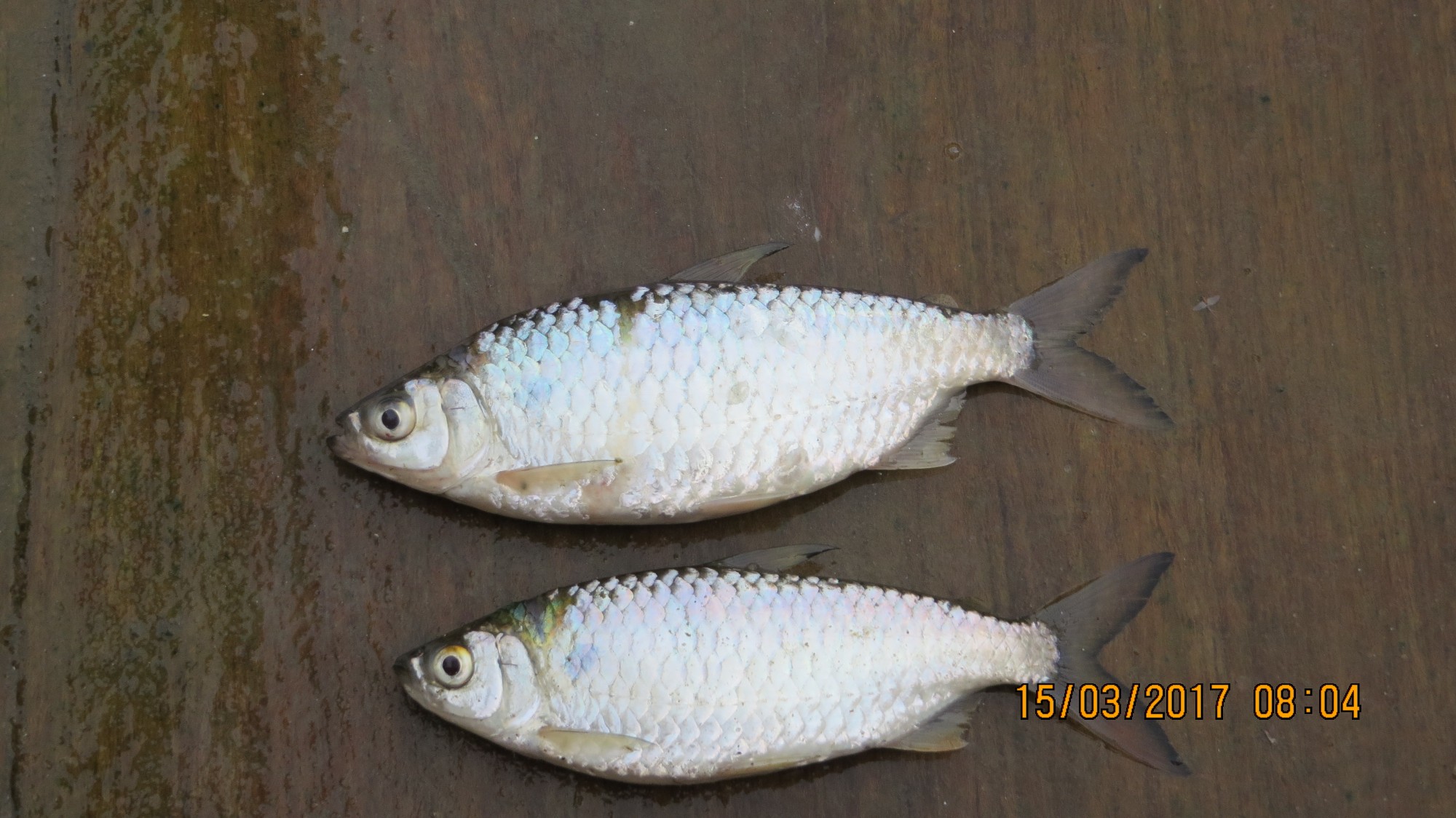Common names:
Nurse tetra
Local: unavailable
Taxonomic tree
Kingdom: Animalia
Phylum: Chordata
Class: Actinopterygii (ray-finned fish)
Order: Characiformes (Characins)
Family: Alestidae (African tetras)
Genus: Brycinus
Species: Brycinus nurse (Rüppell, 1832)
Number of Occurrancies: 149
Etymology (based on Scharpf & Lazara, 2019)
- Brycinus: –inus, an adjectival suffix, Brycon-like (general term for characiform fishes), derived from bryco, to bite, gnash teeth or eat greedily, originally an allusion to fully toothed maxillae
- nurse: possibly refering to the local name for this species along the Nile River in Egypt
Synonyms: click here to view synonyms
Type locality: Cairo, Egypt. Holotype at Senckenberg Museum, Frankfurt (SMF)
Distinguishing characters for the genus
- Short snout
- Small and non-protractile mouth; teeth firmly fixed, those of the outer series stout and not compressed basally
- Two series of functional multi-cuspidate teeth in the upper jaw, the outer series usually tri-cuspid and less massive than the stout, many cusped teeth in the inner series
Distinguishing characters for the species
- The dorsal, caudal and anal fins are tinged with vermilion, and the caudal lobes are a vivid red (diagnostic)
- Depth of the body contained up to 3-4 times in standard length, and length of the head 3.5 (in young) to 4 times
- Head 1.5 to twice as long as broad; fronto-parietal fontanelle absent
- Snout rounded, equal or slightly longer than the eye, whose diameter is contained 2.5 (in young) to 4 times (in adults) in the head length
- Adipose lids are barely visible
- Maxilla not reaching the anterior orbital margin
- 8 teeth in each of the upper jaw series, 8 and 2 in the outer and inner lower jaw series
- Gill rakers moderately long, 16-18 on the lower limb of the first gill arch
- Dorsal fin with 10 rays, the first two unbranched; its origin above the pelvic fin insertion
- Anal fin with 11-14 rays
- Lateral line scales usualy 30, 4.5-5.5 between lateral line and origin of the dorsal fin
Taxonomic remarks: The species is commonly reported in old literature as Alestes nurse, which is currently a senior synonym (Froese and Pauly, 2019). In general appearence, B. nurse closely resembles Brycinus jacksonii and Brycinus sadleri. It differs from these species principally in having fewer anal fin rays (11-14) compared with 18 or 19 in B. jacksonii and 20-21 in B. sadleri, number of lateral line scales compare: 31-34 in B. sadleriand 25-29 in B. jacksonii) and in the coloration of the the fins (campare: grey dorsal fin; anal and pelvic fins with a faint orange or yellow tinge; adipose fin orange; caudal yellow or orange in B. jacksonii and all grey fins in B. sadleri).
Distribution in Uganda: Lakes Albert, the Albert and Murchison Niles, Aswa river
Occurence: Native
Habitat: Pelagic, present in both lake and riverine habitats; potamodromous
Feeding: Omnivorous, feeding on zooplankton, prawn, insects, snails and vegetation
Biology: No information is available on breeding for the Ugandan populations.
Economic importance/End use: Supports a highly lucrative commercial fishery on Lake Albert and Albert Nile. Data for 2012 suggests annual catches were about 52,000 tonnes, with a beach value of $7.5 million. However, this shows a decline from 87,000 tonnes in 2007/2008, valued at $12.4 million (Mbabazi et al. 2012).
IUCN conservation status: click here to view IUCN status
Threats: Fishing
Main references
- Greenwood PH. 1966. The fishes of Uganda. The Uganda Society, Kampala. 131 pages.
- Sharpf C, Lazara J.K. 2019. Fish Name Etymology Database v17. www.etyfish.org
- Mbabazi D, Taabu-Munyaho M, Muhoozi L.I, Nakiyende H, Bassa S, Muhumuza E, Amiina R, Balirwa J. 2012. The past, present and projected scenarios in the Lake Albert and Albert Nile fisheries: Implications for sustainable management. Uganda Journal of Agricultural Sciences, 13 (2): 47-64.
- Froese R., Pauly, D. 2019. FishBase. World Wide Web electronic publication. www.fishbase.org, version (12/2019).

